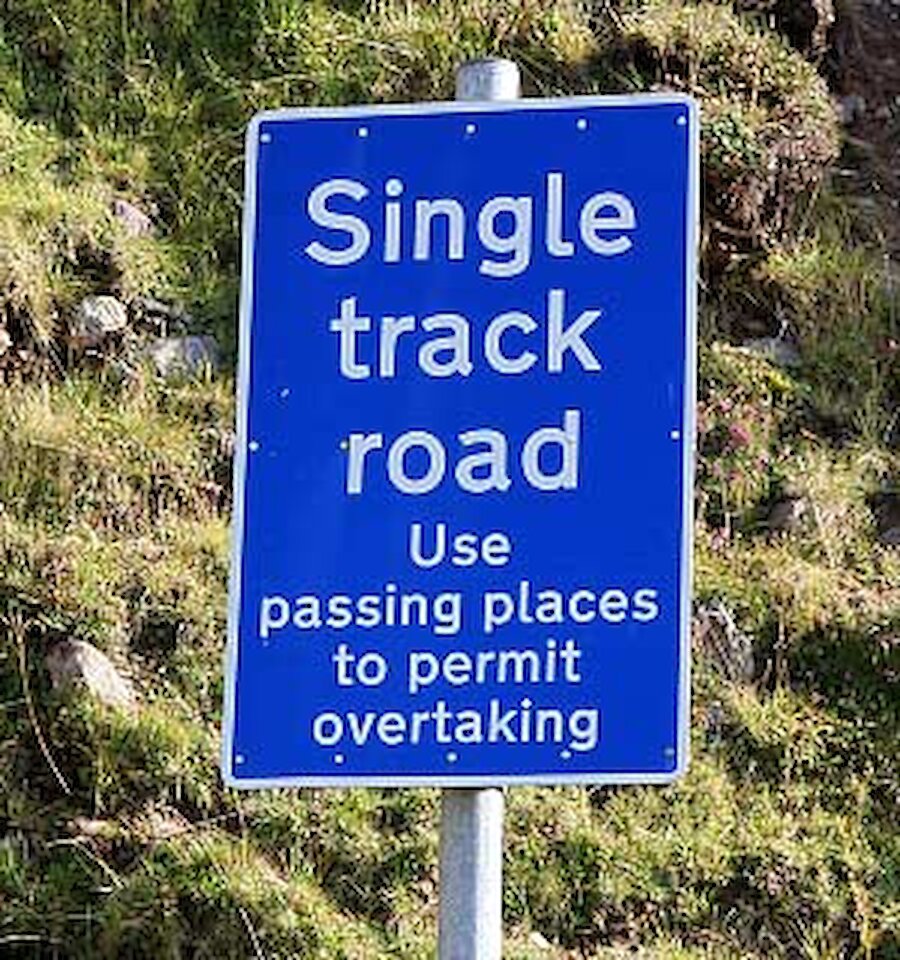Many, indeed most of the roads in Shetland are single track. This is not the same as the mountain biking term, which refers to (mostly downhill) paths to be taking a terrifying speed and with great risk, on a pushbike.
Single track roads should not be taken at speed. They are for driving on gingerly and with care, especially as, in Shetland, sheep and wild ponies often wander freely and the single track roads are normally UNFENCED.
Sheep and ponies are unpredictable. Be very careful. Even on two-lane roads (notably through the island of Yell) which you may be tempted to drive at high speed, sheep can wander in front of you and have caused numerous accidents.
If you hit a sheep, even if runs off, you should report the accident at the nearest house, shop, garage or police station.
If you hit a pony, you are likely to cause serious damage to yourself, the pony and the vehicle you are driving.
Do NOT hit a pony. If you do, wait for help. Hitting a Shetland Pony is like hitting another car.
All sheep and ponies belong to someone.
As for rabbits and birds, you should be driving slowly enough to scare them off. Do not, however, cause an accident and drive off the road for the sake of a rabbit, a bird, or for that matter, a sheep.


